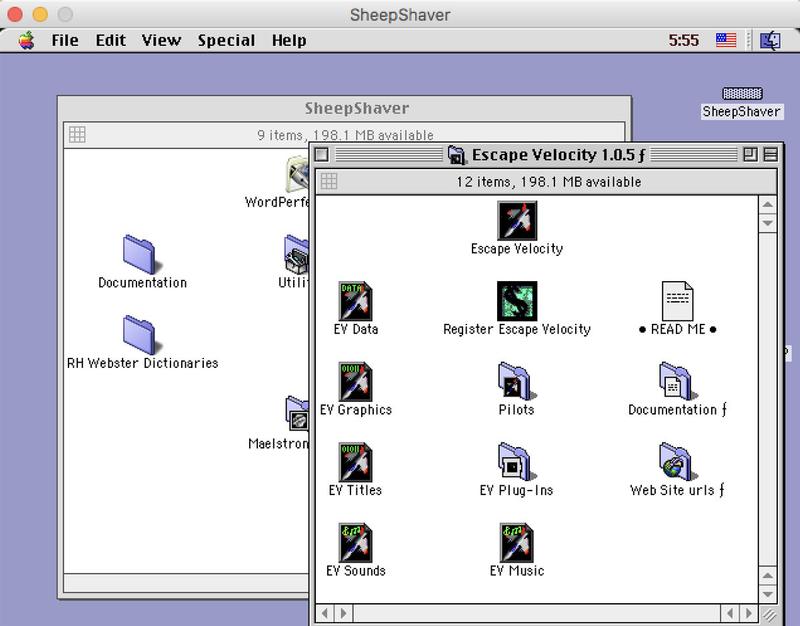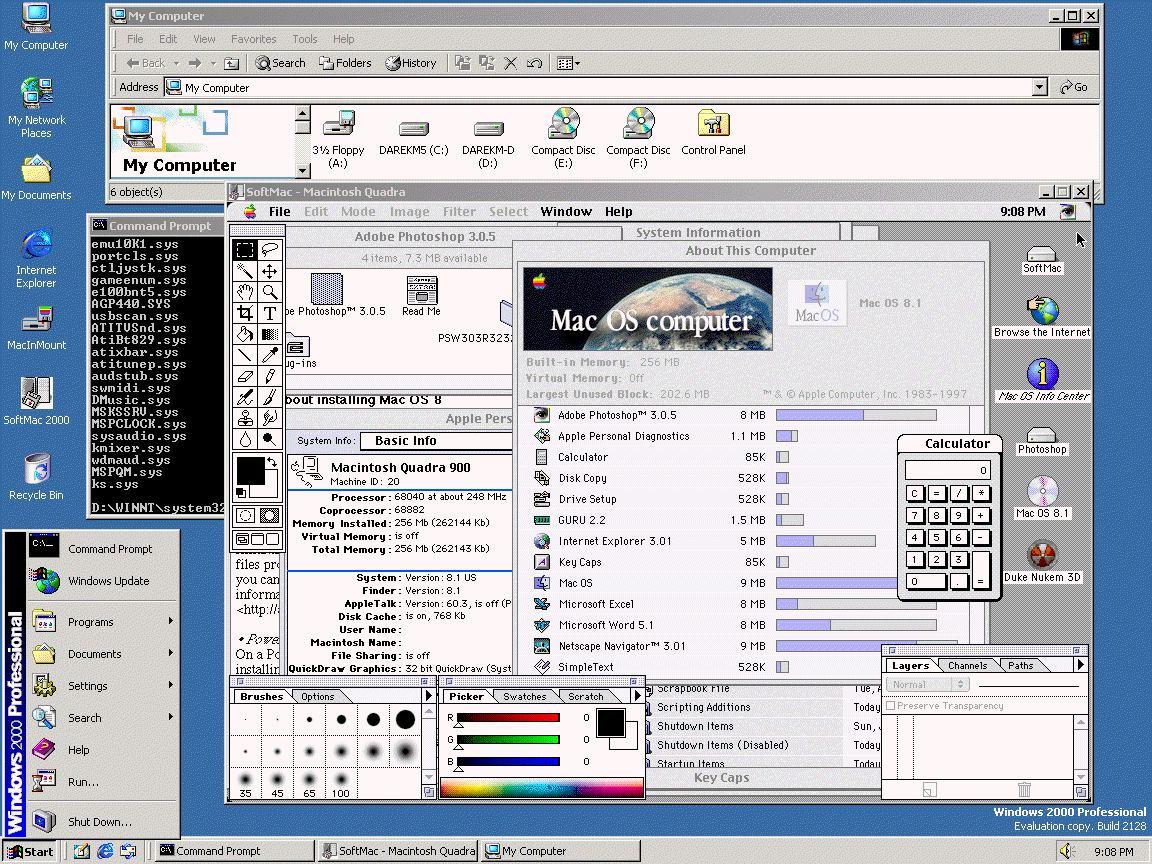

- #Mac os 7.0.1 emulator on windows install#
- #Mac os 7.0.1 emulator on windows update#
- #Mac os 7.0.1 emulator on windows full#
- #Mac os 7.0.1 emulator on windows trial#
- #Mac os 7.0.1 emulator on windows download#
Copy all these items to your Macintosh Disk volume (System7 in this example by dragging them to it).
#Mac os 7.0.1 emulator on windows install#
Locate all 19 parts of the System 7.5.3 Install CD Image you downloaded earlier. For example, if you name the file the same as the volume name in the emulated environment, it is easier to keep yourself right when opening volumes in HFV Explorer.) Get the picture? (NOTE: The volume names and file names do not have to match, I merely do this for the sake of consistency. The 'Mac' will see this as a 500Mb Hard Disk Partition named System7, whereas it is really a file, stored in D:system7.hfv. The Options selected in the Picture above will create a new 'Hard Disk' for use in the Emulated Macintosh. In the 'File' Menu in the HFV Explorer Window, select the option to 'Format New Volume' For a start, lets format a 500 Megabyte Apple HFS Hard Drive. Now, to format a new Hard Drive File for use in Basilisk II. Open the program HFV Explorer from the folder you installed it to. You have created your startup disk for a Macintosh Computer! Insert a blank 1.44Mb floppy disk into the disk drive you gave ticked under the 'Disk' menu. The Image is there.įrom the disk menu, select to write a disk. When you open this Image, NOTHING will be displayed in the WinImage Window, as shown below, DON'T WORRY ABOUT THIS. Open the newly made Network Access folder, and Select to open the 'Network Access.Image' file. Select to show all files in the dialogue at the base of the window.
#Mac os 7.0.1 emulator on windows trial#
To physically write a boot floppy for Basilisk II then use WinImage Trial Edition that you downloaded earlier. It is the latter which we shall concern ourselves with. This will be called 'Network Access', and contains The Network Access Disk Readme and a file called Network Access.Image. This will decompress the file and create a new directory below the one in which 'Network_Access_Disk_7.5.sea.bin' was stored. Locate the file you downloaded earlier called 'Network_Access_Disk_7.5.sea.bin', and drag it into the StuffIt Expander Window. You will be greeted with a screen like the one shown below.

Install the applications for Windows, and create a directory to keep all the Apple files you will be using later. Once you have downloaded all the files you will be using, follow the instructions below and you will soon be looking at the smiley Mac that either know and love, or will soon learn to love!
#Mac os 7.0.1 emulator on windows download#
Obviously, the first step is to download the files that are required and any optional extras you wish to use in your emulated or Macintosh system. Using the ROM without owning a Macintosh is illegal. Note that you may only download the ROM if you have an actual Macintosh. You can download a Mac Quadra 650 ROM here: Download.

#Mac os 7.0.1 emulator on windows update#
MacOS 7.5.3 and optionally the 7.5.5 update on Basilisk II, the freeware Mac II emulator designed by Christian Bauer, from scratch using only freeware, downloadable items. What’s an Emulator? This is a piece of software, which lets a computer system act like another. The emulator environment is based on the open source PCE emulator.The published hard drives contain the entirety of a MacOS 7.0.1 system with HyperCard, BBEdit Lite, Mac Draw, and Mac Paint. Where possible, I have tried to include built in file transfer programs (Web Publishing Wizard, Web Folders), useful system tools (System File Checker, System Restore) and certain wizards (Network Setup Wizard, Internet Connection Wizard).
#Mac os 7.0.1 emulator on windows full#
What's even better than getting that old version of NT up and running is running an OS that shouldn't work that wasn't intended to work on your hardware.What's in this How-To?In this how-to, you be guided through the full process of setting upĬomplete desktops contain all operating system components as well as Internet Explorer and Outlook Express. All OldOs fans will know that there is little more satisfying than getting that old computer or Operating System up and running.


 0 kommentar(er)
0 kommentar(er)
